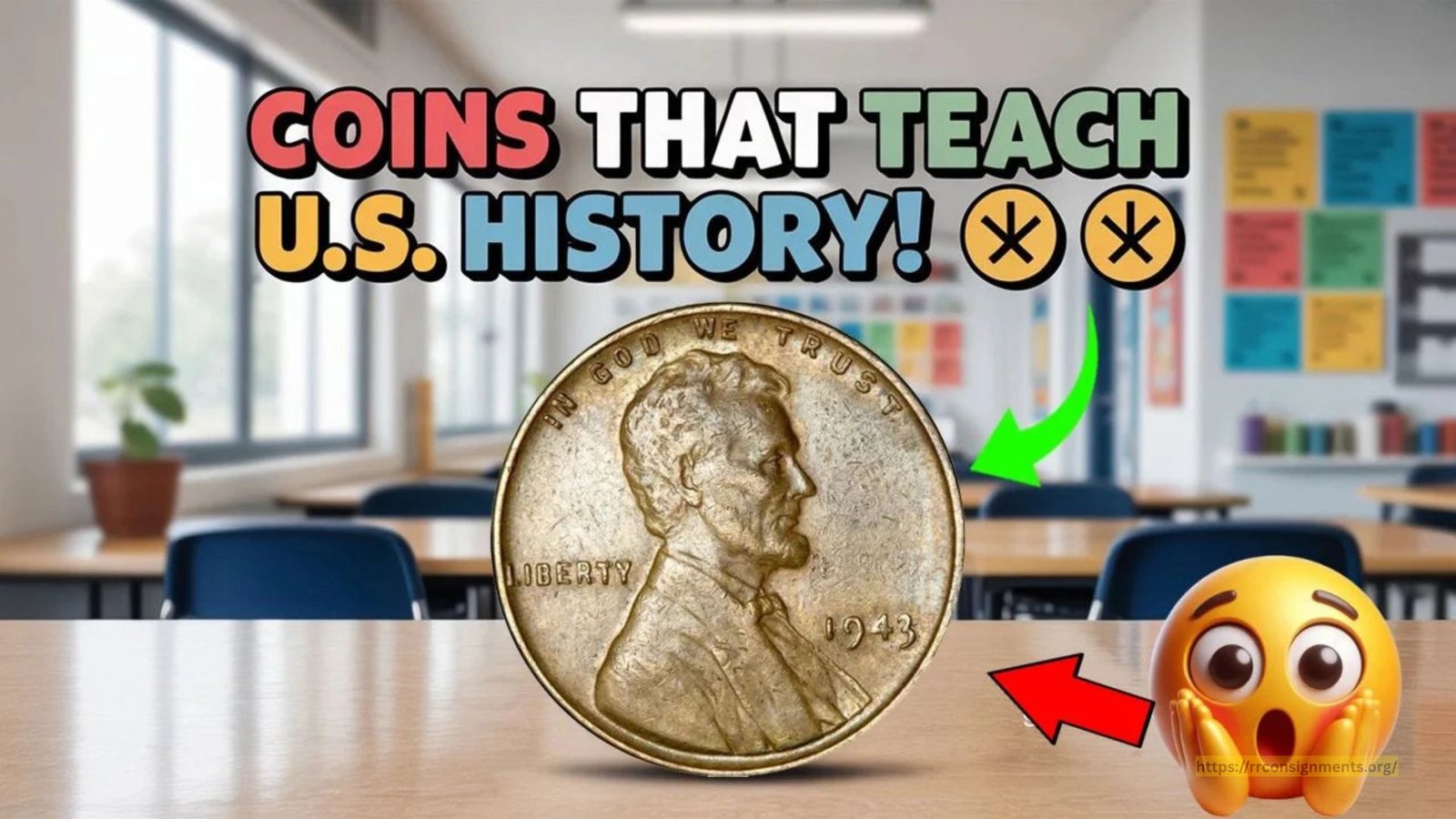U.S. coins are more than just money—they’re tiny pieces of history that tell stories about America’s past. From their designs to the materials they’re made from, coins reflect the changes in society, politics, and culture over time. They’re an excellent tool for teaching students about historical change in a way that’s engaging and easy to understand. This article explores why U.S. coins are perfect for history lessons, offering simple explanations, key points, and answers to common questions.
Why Coins Are a Window to the Past
Coins are like mini time capsules. Each one carries clues about the era it was made in, from the images on its surface to the metal it’s crafted from. Teachers can use coins to show students how America evolved, making history feel real and relatable.
Coins Show America’s Changing Identity
The designs on U.S. coins often celebrate important people, events, or ideas. For example, early coins featured Liberty, a symbol of freedom, while later coins honored presidents like Abraham Lincoln or events like the American Bicentennial. By studying these designs, students can see what mattered most to Americans at different times.
- Example: The Lincoln penny, introduced in 1909, was the first U.S. coin to feature a real person instead of a symbol, showing a shift toward honoring historical figures.
- Connection to History: Coins like the 1976 Bicentennial quarter, with its drummer boy design, mark key moments like America’s 200th birthday.
Coins Reflect Economic and Social Changes
Coins also tell stories about money and society. During tough times, like the Great Depression, the U.S. changed the metals used in coins to save resources. For instance, in 1943, pennies were made from steel instead of copper due to World War II needs. These changes help students understand how history affects everyday life.
- Material Shifts: Nickel shortages in the 1960s led to coins being made with cheaper metals, reflecting economic challenges.
- Cultural Impact: Coins with diverse figures, like the Sacagawea dollar, highlight America’s growing focus on inclusion.
How Coins Make History Lessons Fun
Using coins in the classroom makes history hands-on and exciting. Students can touch, examine, and compare coins, turning abstract ideas into something concrete.
Hands-On Learning
Unlike textbooks, coins are physical objects students can hold. This tactile experience helps them connect with history in a personal way. For example, comparing a shiny new quarter to an old, worn penny sparks curiosity about how coins—and history—change over time.
Encouraging Critical Thinking
Coins encourage students to ask questions and think critically. Why did the U.S. choose certain designs? What do these choices say about the time period? By analyzing coins, students practice skills like observation and interpretation.
- Activity Idea: Have students compare a modern quarter to a 1960s quarter and discuss differences in design or material.
- Skill Development: Analyzing coins builds skills like research, comparison, and storytelling.
Key Historical Events Reflected in U.S. Coins
Coins often mark major events or shifts in American history. Here’s a table highlighting some examples:
| Coin | Year | Historical Event or Theme | Significance |
|---|---|---|---|
| Lincoln Penny | 1909 | Honoring Abraham Lincoln | First U.S. coin to feature a historical figure, symbolizing national unity. |
| Steel Penny | 1943 | World War II resource conservation | Made of steel to save copper for the war effort. |
| Bicentennial Quarter | 1976 | America’s 200th anniversary | Celebrated independence with a unique drummer boy design. |
| Sacagawea Dollar | 2000 | Recognizing Native American contributions | Highlighted diversity and the role of women in history. |
| State Quarters Program | 1999-2008 | Celebrating state histories | Each state’s design showcased unique cultural or historical elements. |
This table shows how coins connect to specific moments, making them powerful tools for teaching.
Why Teachers Should Use Coins in Class
Coins are affordable, accessible, and versatile, making them ideal for educators. Here’s why they work so well:
Easy to Find and Use
Coins are everywhere—teachers can bring in their own or ask students to contribute. Online resources, like the U.S. Mint’s website, also offer images and information for free.
Cross-Subject Connections
Coins tie history to other subjects like math, art, and social studies. For example:
- Math: Calculate the value of coins or study inflation over time.
- Art: Analyze coin designs as examples of visual storytelling.
- Social Studies: Explore how coins reflect cultural values or diversity.
Engaging for All Ages
From young kids to high schoolers, coins appeal to everyone. Younger students love the tactile experience, while older students can dive into deeper historical analysis.
Tips for Using Coins in History Lessons
Here are some practical ways to bring coins into the classroom:
- Create a Coin Timeline: Have students arrange coins by year and discuss the events or themes tied to each.
- Design a Coin: Ask students to create their own coin designs based on a historical event or figure.
- Compare Old and New: Use coins from different decades to spark discussions about change over time.
- Visit the U.S. Mint Website: Explore free educational resources, including coin images and historical facts.
Conclusion
U.S. coins are more than pocket change—they’re powerful tools for teaching history. By showing how designs, materials, and themes have changed, coins help students connect with America’s past in a hands-on way. They’re affordable, engaging, and versatile, making them perfect for classrooms. Whether you’re exploring economic shifts, cultural milestones, or key events, coins bring history to life. Start using them in your lessons to make learning fun and meaningful!
FAQs
Why are U.S. coins good for teaching history?
Coins reflect historical events, cultural values, and economic changes through their designs and materials, making them engaging tools for students.
How can teachers use coins in lessons?
Teachers can create timelines, compare old and new coins, or have students design their own coins to explore historical themes.
Where can I find coins for classroom use?
Coins can be found in everyday circulation, at banks, or through online resources like the U.S. Mint’s website.
What historical events are shown on U.S. coins?
Events like the American Bicentennial, World War II, and the recognition of figures like Sacagawea are featured on various coins.
Can coins be used for subjects other than history?
Yes, coins connect to math (calculating value), art (analyzing designs), and social studies (exploring cultural themes).











